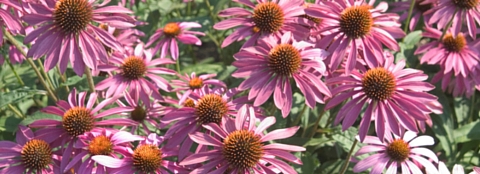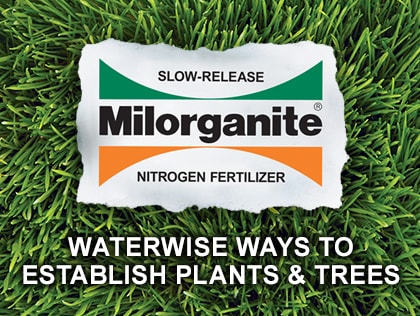August Northern Garden Checklist

Watering:
- August is usually the hottest, driest month of the summer. Check all plantings for moisture stress. New plantings and moisture loving plants are your highest priority. Check soil moisture twice a week.
- Established and mulched trees and shrubs need less frequent watering. Give them a helping hand during extended dry periods. Water established trees and shrubs thoroughly until the top 12 inches of soil under the drip-line is moist.
- Monitor gardens for brown leaf edges, a symptom of scorch. Pay special attention to hostas and other shade lovers grown in sun. Water is not always the solution. Often the plants are unable to absorb water as fast as they lose it (transpire) during extreme heat. Mulch the soil, water properly and consider moving plants to a more suitable location in the future.
- You can still make a difference in the health of your plants and reduce watering frequency with proper mulching. Spread a thin layer of shredded bark, leaves, straw or other organic material over the soil surface. This keeps the soil cool and moist during hot, dry weather.
Flower,Tree, and Shrub Care:
- Stop fertilizing your trees, shrubs and perennials in August. This allows the plants to start preparing for winter instead of producing new growth that may not have time to harden off before cold temperatures arrive.
- Plan on replacing weather worn annuals with fall bedding plants. Purchase pansies, kale and other cool season annuals to spruce up the garden for fall.
- Take cuttings of annual vinca, geranium, coleus and other annuals for a little added color indoors over winter.
- As temperatures cool you can begin digging and dividing any of your overgrown and crowded iris and other spring blooming perennials. Amend the soil with compost before planting divisions in new gardens or back in their original location.
Vegetable Harvest:
- Warmer temperatures speed ripening so monitor and harvest vegetables regularly for the best flavor and greatest productivity.
Pest and Disease Control:
- Keep pulling weeds and removing insects and diseased leaves as soon as they are discovered. Do not compost perennials or annual weeds gone to seed or pest-infected plant material.
- Check phlox, bee balm, zinnias, begonias and other annuals and perennials for powdery mildew. Proper spacing for improved air circulation and sufficient sunlight will help reduce the risk of this disease. Clean up mildew plant debris this fall and consider replacing susceptible plants with mildew-resistant varieties.
- Check the lower leaves of tomatoes for yellowing and brown spots caused by septoria leaf spot and early blight. Remove and destroy infected leaves as soon as they are found. Fall cleanup, proper spacing, staking or towering and full sun will reduce the risk of this disease.


